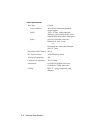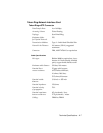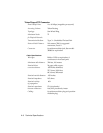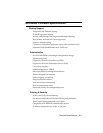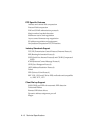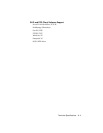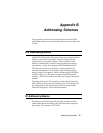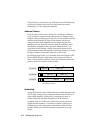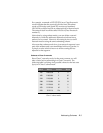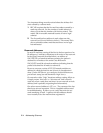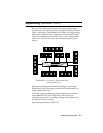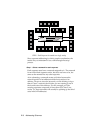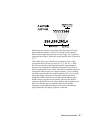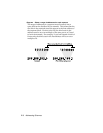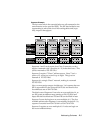
B-2 Addressing Schemes
These 32 bits are structured very differently from IPX addresses,
in which you always have an 8 hex digit network number
followed by a 12 hex digit node address.
Address Classes
In IP, the same 32 bits can be divided in a number of different
ways to indicate networks and subnetworks of different sizes.
Imagine what would happen if the colon in the middle of an IPX
address could slide left or right in the address. Moreover,
imagine that the node addresses are no longer the physical
addresses of your network interface cards, but arbitrary num-
bers that are mapped to those physical addresses later. You
could then accommodate varying network structures from a
small number of network segments with huge numbers of nodes
to large numbers of networks with only a few nodes.
In the illustration below, you can think of the line between NET
ID and HOST ID as the equivalent of the colon in an IPX ad-
dress. Notice that the position of this line is determined by the
position of the first zero bit in the address.
CLASS A
CLASS B
CLASS C
0
0
0
1
11
NET ID
NET ID
NET ID
0 1 2 3 4
8
16
24
31
HOST ID
HOST ID
HOST ID
IP Address Classes
Subnetting
A large IP network can be subdivided into smaller subnetworks.
This is done using a device called the subnet mask (in this text,
often called netmask), which tells a routing device how to
further subdivide the Host ID portion of an IP address.
A subnet mask is a 32 bit value which also can be written in
dotted decimal notation. It contains a number of bits set to 1
(indicating the network portion of an address) followed by a
number of bits set to 0 (indicating the host portion of an ad-
dress).



